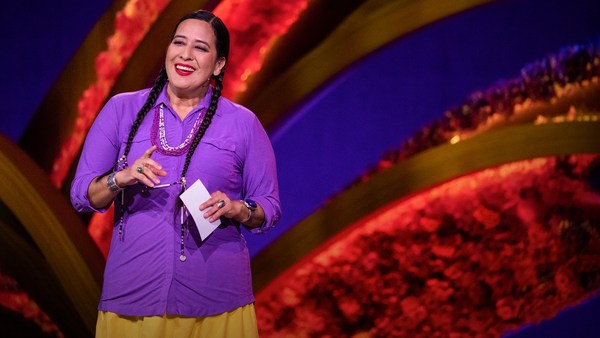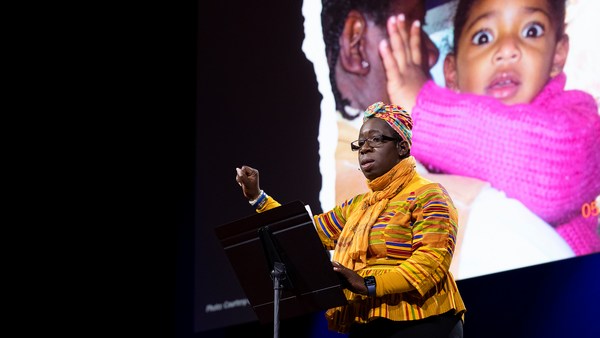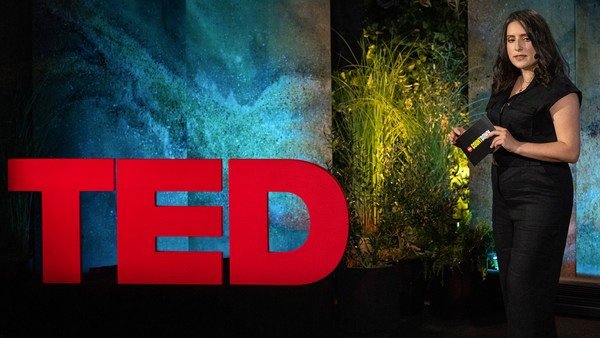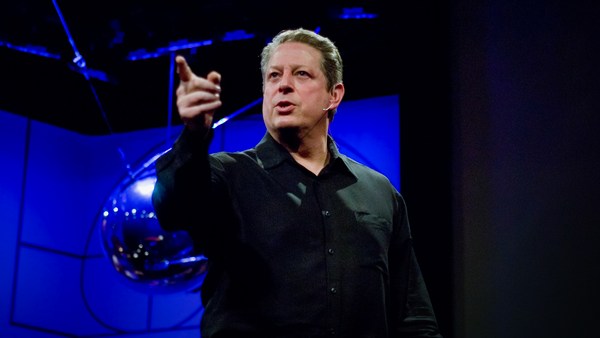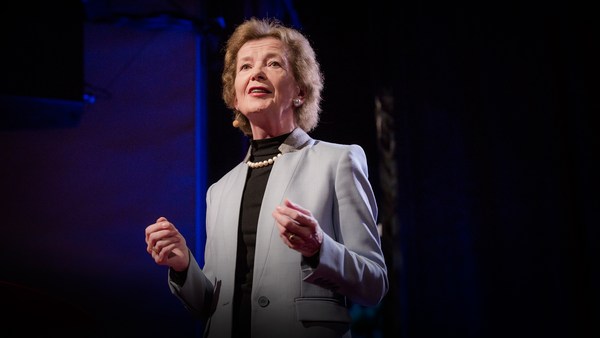It should be no surprise that every community should have a right to a clean environment. Yet, some are sacrifice zones. Sacrifice zones: communities living on the front lines of pollution and environmental hazards. But the good news is that we have a unique opportunity to address legacy pollution as we together build an equitable and just climate future.
Now, this is a story about communities in crisis. Mostly, these are communities of Black and brown and Indigenous peoples. It's often a story of low-income communities. But race, race is the decisive factor. Now, studies show that an average middle-income Black family with an 87,500-dollar income is likely to live with more pollution than a white family making 22,500 dollars a year.
Now, my organization, WE ACT for Environmental Justice, works within a movement of hundreds of environmental justice groups, here and abroad, to address the disproportionate impact of pollution borne by our communities.
So I'm talking about environmental justice, which is a civil rights and a human rights analysis of environmental decision making, with a focus on the permitting, the permitting process that gives polluters permission to pollute within a regulatory standard for air, water and soil. Now, these permits, they are an allowance that sacrifices the health of community residents. The cumulative effect of multiple facilities sited in a community that emit high levels of pollution in close proximity to where people live. That contributes to glaring health disparities. Now, Harvard University studies among Black Americans living in areas like Harlem and the South Bronx, those are communities which do not need clean air standards set by the Environmental Protection Agency. And those studies that found that Black Americans have died of COVID-19 at higher rates than others due to living in air-polluted communities.
Now, that's not a surprise since the majority of people who live in areas that do not meet clean air standards are Latinos and Black Americans. And that's the case in an area called "Cancer Alley." Now, there's a song sung by the late Nat King Cole called "Unforgettable." And that is what "Cancer Alley" is. It is unforgettable. It's in the worst possible way. It's a 75-mile corridor between New Orleans and Baton Rouge. It's a continuum of petrochemical and plastics manufacturing facilities on acres of former plantations. Now, these facilities have created an intergenerational history of death from cancer, with some communities suffering cancer rates higher than the national rate.
Now communities experience environmental hazards and pollution exposure in diverse ways. In urban areas, mobile sources, contaminated sites, they're really the challenge. And local governments generally manage the infrastructure of pollution. But in smaller cities and rural areas, industrial and oil refineries, landfills and incinerators, they're usually the problem. And in places like Texas and California, there may be no zoning laws that separate industrial facilities from residential backyards.
So environmental racism and injustice results from a complex legacy of housing segregation, land use and zoning discrimination, and from unequal enforcement and policies. Now decades ago, policies such as redlining denied home loans to people of color into certain communities. And this government policy reinforced racial segregation in cities and diverted investments away from those communities, creating large disparities in home ownership as well as urban heat environments. A few trees and no open space. So today we're still living out the legacy of those racist policies.
Now, I first began organizing around these issues as an elected Democratic district leader in my West Harlem neighborhood. In 1988, I co-founded West Harlem Environmental Action, known as WE ACT for Environmental Justice. And, you know, we began organizing, educating our neighbors to understand the impact of the disproportionate siting and permitting of polluting facilities in our communities. We started out by pressing New York City to fix the North River sewage treatment plant in the Hudson River that was ruining our quality of life by emitting toxic fumes. And we began to ask ourselves a number of questions. How could we transform the New York City diesel bus fleet to clean fuel buses since we housed over 740 of the city diesel bus fleet in uptown depots? How could we have a waterfront park along the beautiful Hudson River instead of a parking lot? And how could we get environmental justice on the agenda of New York City, the state and the federal government to invest in sustainability in our communities?
I know that it only takes one person to reimagine what's possible, and some policy change takes decades. It took us 18 years to transform the New York City diesel bus fleet to hybrids. However, it took only a few months to ensure that all New York schools are tested for lead in drinking water. I know that so much is possible when we have the right political moment. But to capitalize, we must mobilize a critical mass of people to create real change. And to monitor that our policies are implemented in the way that was intended. And environmental justice groups have done just that. In a number of ways.
So we've created working groups and campaigns amongst people who have a real stake in the outcome, those most affected by harm or new policies. And we engage them in environmental decision making. Those are the people who have the lived experience, who can best advise on climate adaptation and resilience planning. Now, if their perspectives had been known and integrated into the inter-agency emergency response planning in New Orleans for Hurricane Katrina, then thousands of families would not have been stranded on their roofs, waiting for rescue or sleeping in a sports stadium, because the city would have already known that lower-income families living in a flood zone did not have a car to evacuate the city or a credit card to access a hotel room.
Another tactic we engage is we engage community in educational workshops that help them better articulate the data, testify at hearings, train residents to become citizen scientists who collect their own air and water quality data to influence policymakers and elected officials. And those officials should resource every community to develop a climate action plan that addresses neighborhood level response and challenges to extreme weather events.
We've also developed strong, strong policy agendas at the city, state and federal levels, based on community perspectives, experience and the evolving transition from a fossil fuel economy. And these are tactics that can be applied within local contexts in any community. So as we transition to renewable energy sources, we know that energy insecurity will impact millions more households as utility bills increase. And to decarbonize buildings, a pre-investment will be needed to upgrade residential buildings in frontline communities before electrification of all buildings will be achieved.
So I challenge you to create the change we need by incorporating equity and lived experience into all public and government policies. My vision is to redress the legacy of pollution by targeting frontline communities, not for pollution, but to become green zones. Green zones where we can incentivize community shared solar, electrification, green businesses, good jobs and worker cooperatives. Because today we are at an inflection point with an opportunity to achieve that vision. You know, the Biden administration has committed to centering environmental justice in all government policies through an executive order that directs at least 40 percent of the benefits from federal investments in clean energy to go to disadvantaged communities. So there is an opportunity to implement a transformative and accountable process for the fair and just distribution of benefits of Justice40 to frontline communities of Black, brown and Indigenous peoples. But we must make certain that the investments and the benefits reach the communities intended, given the bias and ambivalence of many state and local governments. But if done effectively, this can be transformative and could stop the cycle of exploitation and extraction.
Every community, every community has the right to a clean environment. And you do not need to be an environmental champion or a climate justice leader to embrace that value.
So I call on your humanity to center the voices and perspectives in all policies of those most affected by environmental hazards and climate change. We can create a legacy of environmental quality and climate resilience for all. We can do this and we must.
Thank you.
(Applause)
